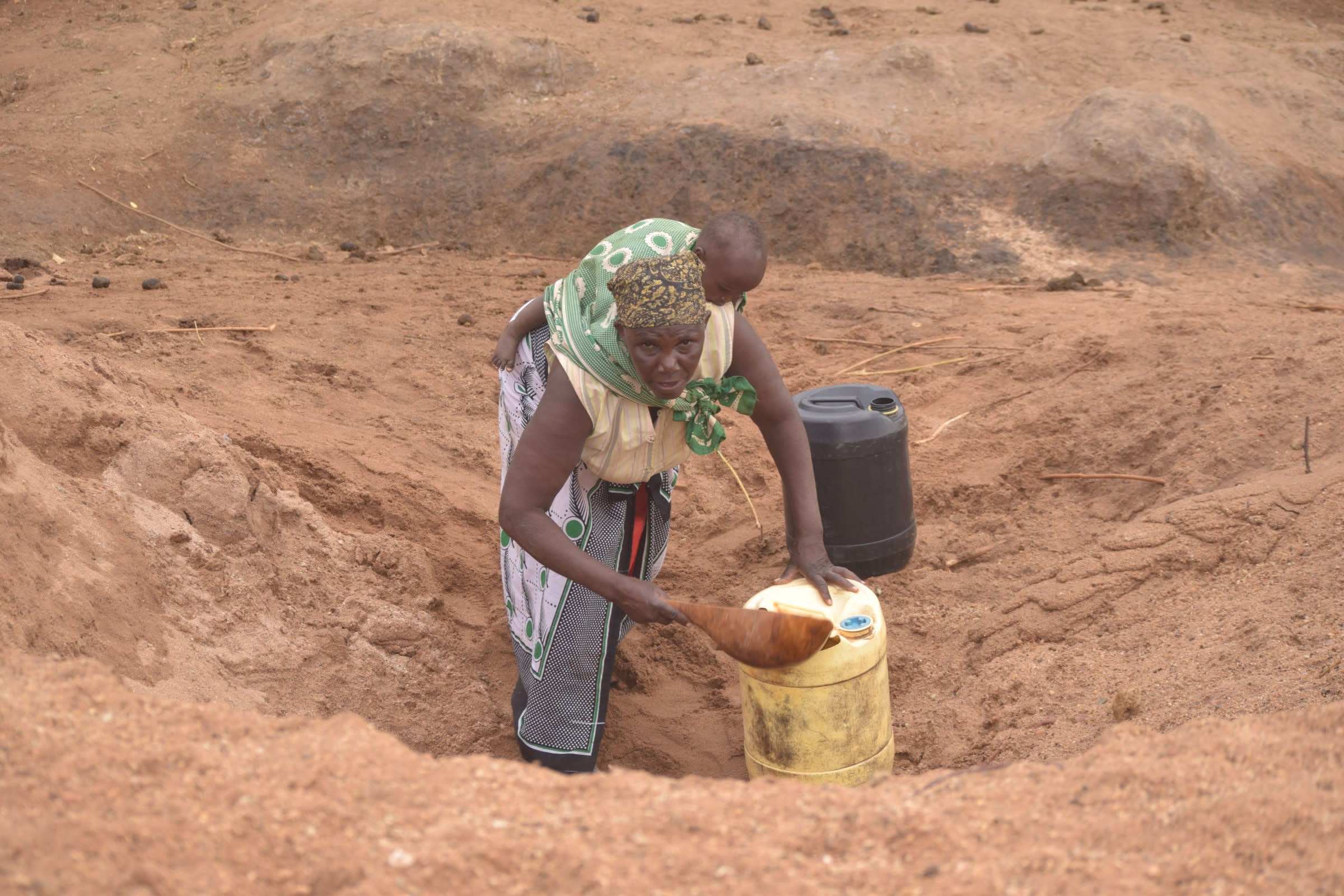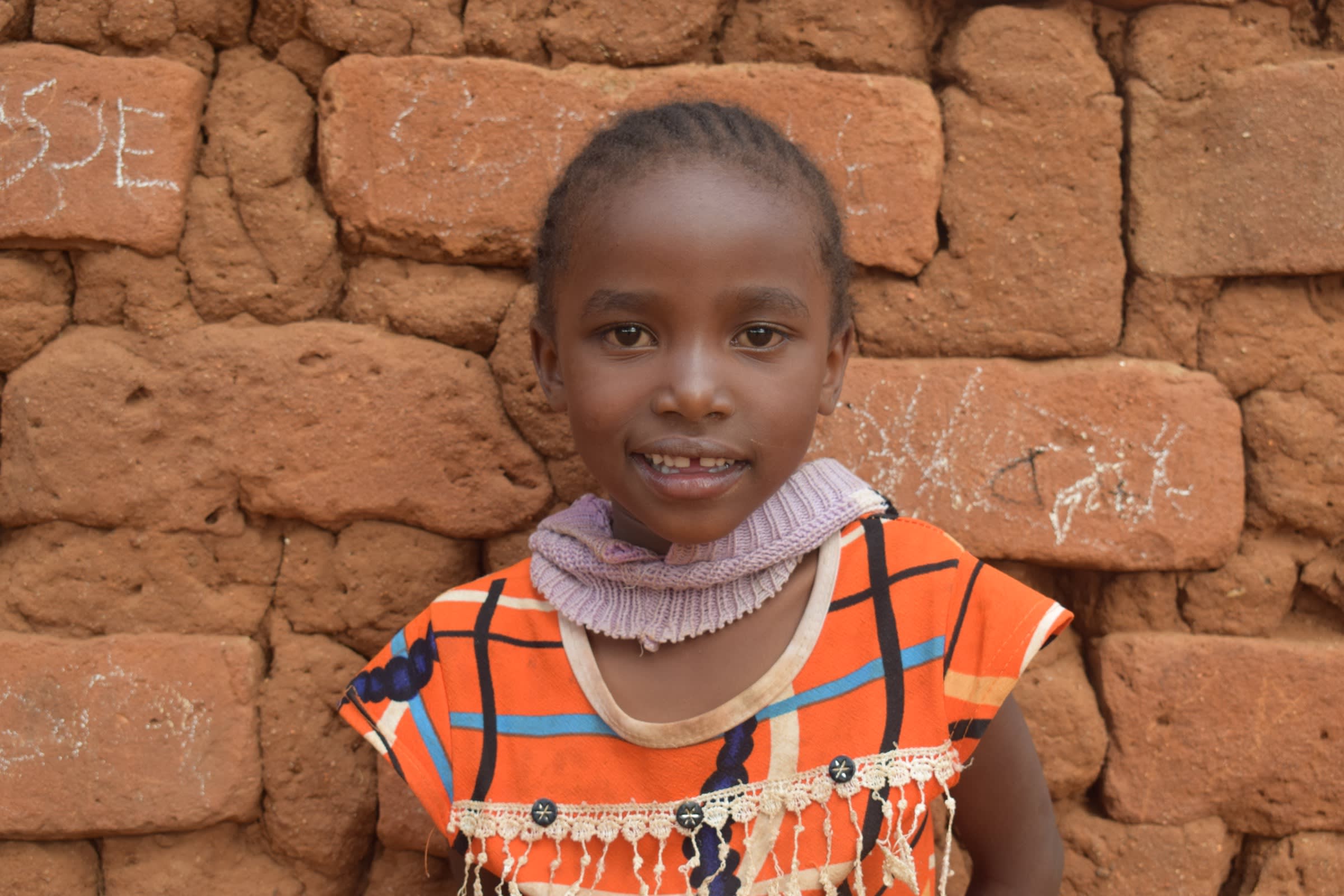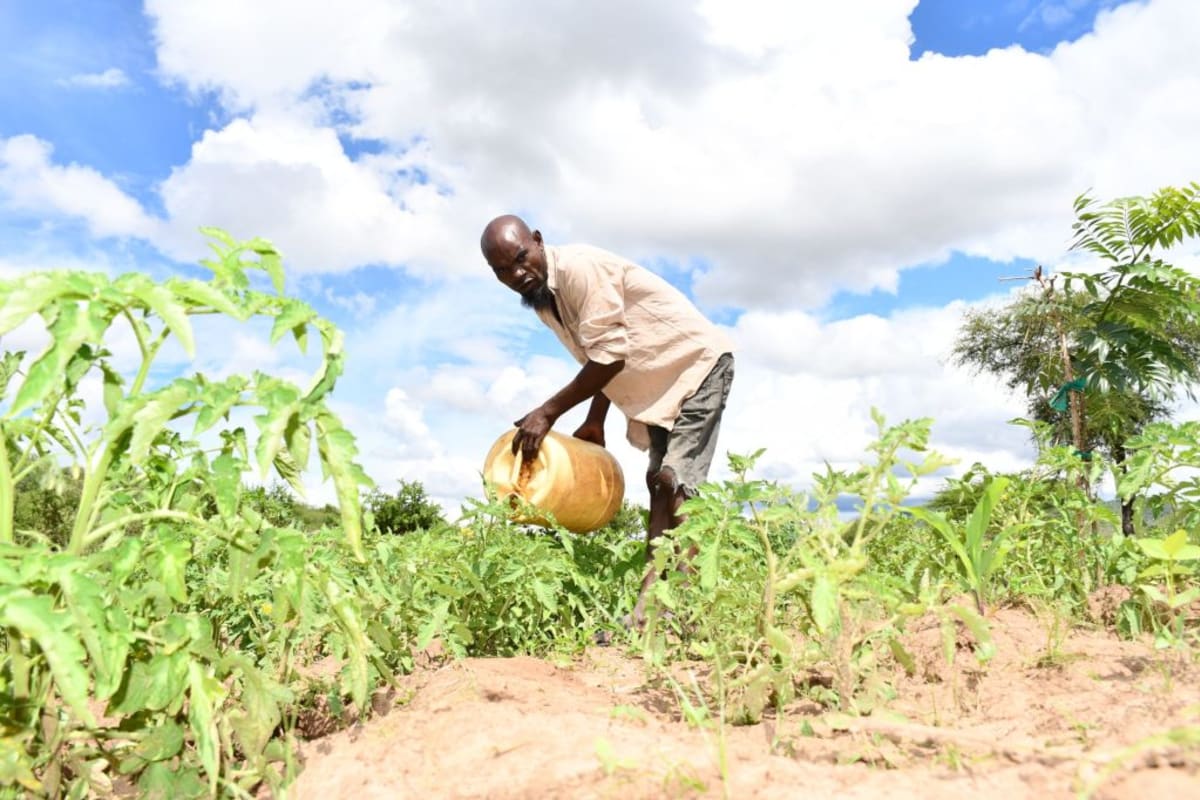The water situation in Yumbani Community is truly desperate. Kwa Mutuku River, where community members fetch their water, is seasonal. Once the rains have elapsed, the river vanishes. Fetching water is the most strenuous and time-consuming part of their days.
"Water scarcity is a big challenge here," said Domiana Nduku, 61. She is pictured below fetching water from a scoophole. "At the moment, the land is very bare and we are unable to engage in any farming activities due to insufficient water supply. We do not have enough food. We are unable to plant trees to protect our environment as there is [an] inadequate water supply. We have to walk for very long distances in search for water."

When the water table is high, usually immediately after the rainy season, it takes less than an hour to fetch water and get back home. But during the dry season, it can take two hours just waiting in a queue to fetch water at the riverbed. Locals dig scoopholes in the riverbed, which are open and contaminated by humans, animals, farm chemicals, dust, and surface runoff.
Although typhoid is the most commonly reported ailment in Yumbani Community, the community members also have regular issues with cholera and dysentery.
"Now, it is challenging to get water for drinking, cooking, washing clothes, and washing hands," said 4-year-old Gladys (who is very photogenic - see the picture below). "My mother has to walk for long looking for water to use here at home. Lack of water makes life very difficult."

Most community members live in poverty. If they're close enough to the riverbed, community members can rely on subsistence farming of crops such as maize, green grams, beans, cowpeas, and pigeon peas. Others who live farther away rely on casual labor, which is never guaranteed, as this involves working on the farms of other community members, which can only be done when the owners of the farm have crops or money to spare. Almost all of the community's youth have migrated to the urban areas to search for better-paying jobs. The elderly depend on their families. And all this, according to Domiana, would change for the better if the community members had a readily available source of reliable, safe water.
"If we had water or would get water near us, we would do a lot to change our environment and also improve our livelihoods," Domiana concluded.
What we can do:
Our main entry point into the community is the Wikwatyo Wa Kasunguni Self-Help Group, which is comprised of households that are working together to address water and food scarcity in their region. These members will be our hands and feet in both constructing water projects and spreading the message of good hygiene and sanitation to everyone.
Sand Dam
After the community picked the ideal spot, our technical team went in and proved the viability by finding a good foundation of bedrock. Now, our engineers are busy drawing up the blueprints.
We are unified with this community to address the water shortage. As more sand dams are built, the environment will continue to transform. As the sand dams mature and build up more sand, the water tables will rise. Along with this sand dam, a hand-dug well will be installed to give community members an easy, safe way to access that water.
Building this sand dam along with the well in this community will help bring clean water closer to hundreds of people living here.
Training
These community members currently do their best to practice good hygiene and sanitation, but their severe lack of water has been a big hindrance to reaching their fullest potential.
We will hold hygiene and sanitation training sessions with the Self-Help Group and other community members to teach about important hygiene practices and daily habits to establish at the personal, household, and community level. This training will help to ensure that participants have the knowledge they need to make the most out of their new water point as soon as water is flowing.
One of the most important topics we plan to cover is the handling, storage, and treatment of water. Having a clean water source will be extremely helpful, but it is useless if water gets contaminated by the time it is consumed. We will also emphasize the importance of handwashing.
We and the community strongly believe that all of these components will work together to improve living standards here, which will help to unlock the potential for these community members to live better, healthier lives.
We typically work with self-help groups for 3 to 5 years on multiple water projects. We will conduct follow-up visits and refresher trainings during this period and remain in contact with the group after all of the projects are completed to support their efforts to improve sanitation and hygiene.

 Sand Dam
Sand Dam
 Rehabilitation Project
Rehabilitation Project































